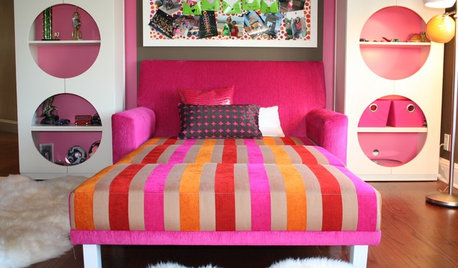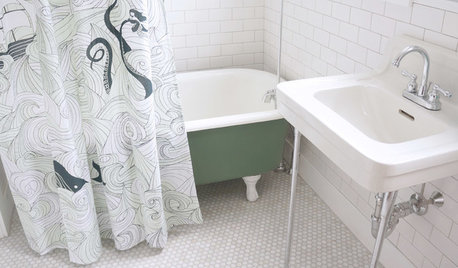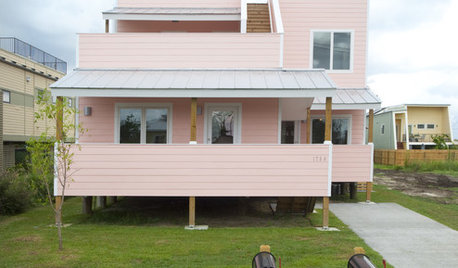HVAC quotes: Need help deciding between options
sk_dolcevita
8 years ago
Featured Answer
Sort by:Oldest
Comments (49)
sk_dolcevita
8 years agotigerdunes
8 years agoRelated Discussions
Help with HVAC quotes
Comments (8)on cooling, the heat pump and the a/c work the same since you have gas available, gas heat would be the normal choice for heating your home. Depending on energy costs for electricity and nat. gas there are times when one is cheaper to operate than the other. Pumps will operate their best with 'warmer' cold weather. The term is called 'balance point'. Heat pumps also put out air that is not as warm as a gas furnace. Gas furnaces tend to dry everything out (maybe not bad in FL). You may want to entertain a Hybrid system. The old name was duel-fuel. Heat pump for temps down to say 45 and gas furnace below that. Those temps are a guess w/out actually calculating. If I was to pick, I prefer nat. gas....See Morecarrier hvac or trane hvac
Comments (5)Jt Some questions please. What is your location? What size home living area? What size furnace and eff are you replacing? What size AC are you replacing? I would like to know the exact mdl number evap coil for each quote. What thermostat is proposed for the Carrier quote? That is a big difference between the 96% eff Carrier furnace and the 80% eff Trane furnace-both 60 K input. That would be about 56 KBTUs output on the Carrier and about 48 KBTUs on the Trane. Not insignificant. I don't care for some shortcuts that homeowners make particularly on reusing linesets and using existing thermostats that shortchange a nice furnace's operational capability. Post back with the info requested. IMO...See MoreNeed Help with HVAC Quotes in Houston
Comments (11)AS: "The items are condenser pad, electrical disconnect box, liquid and suction line filter driers, metal furnace stands, plywood to lay furnace down, double wall flue pipe, metal supply and return air plenums lined with R-8 insulation, add return air, media filter (Lennox), take splitter off bedroom ducts and run directly to plenum, airflow check before and after installation, extend ductwork where needed, metal supply air registers (16 total), start collars, Honeywell touchscreen thermostat displays temperature and humidity, safety drain pan, safety float switch, evacuation after copper brazed in....See MoreSingle HVAC zoned or two HVACs without zoned system
Comments (27)The biggest problem with HVAC zone systems is knowing when to choose it as a solution and when not to. Some HVAC companies it's about "sell, sell, sell" whether or not it works... there's more money in "sell, sell, sell" --- when it's only about money? So does the comment above mean I do it for free? No. If you think that you are reading things that aren't there. New construction? best to choose separate systems 9 times out of 10. In order for a zone system to work, you have to know what you are doing. Most HVAC companies staff (the techs they send you) are 20-30 year olds. How much practical experience could they possible have? It's best for HVAC zone systems to be an elegant solution. A HVAC zone system is a tool in the tool bag. Not all homes are suitable for zone systems. Some homes there is no other way, and in some cases complications to those problems will make an HVAC zone system design possibly more prone to problems. You have a problem now, do you want more problems. These decisions among others are decided "in person" --- so considering that becareful what information you decide upon from the internet. Just because it's here doesn't necessarily mean it's true. That said: Depending on equipment level chosen, how many different floors you have in your structure, how much room you have available... will all be factors that make you decide one way or another. From there it's in your best interest to pick a contractor that is skilled: especially when it comes to HVAC zone systems. (there's a lot of garbage out there.) (click to enlarge if necessary) I service the Katy, Texas area....See Moresk_dolcevita
8 years agosk_dolcevita
8 years agomike_home
8 years agosk_dolcevita
8 years agotigerdunes
8 years agolast modified: 8 years agosk_dolcevita
8 years agotigerdunes
8 years agosk_dolcevita
8 years agotigerdunes
8 years agosk_dolcevita
8 years agosk_dolcevita
8 years agotigerdunes
8 years agolast modified: 8 years agotigerdunes
8 years agolast modified: 8 years agosk_dolcevita
8 years agosk_dolcevita
8 years agolast modified: 8 years agosk_dolcevita
8 years agolast modified: 8 years agotigerdunes
8 years agosk_dolcevita
8 years agotigerdunes
8 years agosk_dolcevita
8 years agotigerdunes
8 years agosk_dolcevita
8 years agolast modified: 8 years agosk_dolcevita
8 years agolast modified: 8 years agoJim Sokoloff
8 years agosk_dolcevita
8 years agolast modified: 8 years agoJim Sokoloff
8 years agosk_dolcevita
8 years agolast modified: 8 years agomike_home
8 years agoJim Sokoloff
8 years agosk_dolcevita
8 years agolast modified: 8 years agotigerdunes
8 years agolast modified: 8 years agomike_home
8 years agosk_dolcevita
8 years agomike_home
8 years agotigerdunes
8 years agosk_dolcevita
8 years agosk_dolcevita
8 years agolast modified: 8 years agotigerdunes
8 years agosk_dolcevita
8 years agosk_dolcevita
8 years agomike_home
8 years agosk_dolcevita
8 years agolast modified: 8 years agomike_home
8 years agotigerdunes
8 years agoweedmeister
8 years ago
Related Stories

SMALL SPACESDownsizing Help: Where to Put Your Overnight Guests
Lack of space needn’t mean lack of visitors, thanks to sleep sofas, trundle beds and imaginative sleeping options
Full Story
MOVINGRelocating Help: 8 Tips for a Happier Long-Distance Move
Trash bags, houseplants and a good cry all have their role when it comes to this major life change
Full Story
FLOORSWhat to Ask When Considering Heated Floors
These questions can help you decide if radiant floor heating is right for you — and what your options are
Full Story
BATHROOM WORKBOOKStandard Fixture Dimensions and Measurements for a Primary Bath
Create a luxe bathroom that functions well with these key measurements and layout tips
Full Story
CURB APPEAL7 Questions to Help You Pick the Right Front-Yard Fence
Get over the hurdle of choosing a fence design by considering your needs, your home’s architecture and more
Full Story
BATHROOM MAKEOVERSRoom of the Day: See the Bathroom That Helped a House Sell in a Day
Sophisticated but sensitive bathroom upgrades help a century-old house move fast on the market
Full Story
CONTEMPORARY HOMESFrank Gehry Helps 'Make It Right' in New Orleans
Hurricane Katrina survivors get a colorful, environmentally friendly duplex, courtesy of a starchitect and a star
Full Story
EXTERIORSHelp! What Color Should I Paint My House Exterior?
Real homeowners get real help in choosing paint palettes. Bonus: 3 tips for everyone on picking exterior colors
Full Story
REMODELING GUIDES8 Tips to Help You Live in Harmony With Your Neighbors
Privacy and space can be hard to find in urban areas, but these ideas can make a difference
Full Story
BATHROOM DESIGNKey Measurements to Help You Design a Powder Room
Clearances, codes and coordination are critical in small spaces such as a powder room. Here’s what you should know
Full Story



tigerdunes